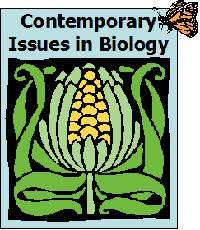
Week 9, Chapter 5 -- Digging Deeper Sample Answer
Course home | Weekly schedule | Announcements | Instructor Info | Desire2Learn | MasteringBiology® | Honor Code | FAQs | HELP!
 |
Week 9, Chapter 5 -- Digging Deeper Sample AnswerCourse home | Weekly schedule | Announcements | Instructor Info | Desire2Learn | MasteringBiology® | Honor Code | FAQs | HELP! |
Notice: this example is relevant to arthritis, not cancer. It is meant to demonstrate the style and type of content you will need to incorporate into your assignment. For your own report, make sure you are addressing cancer, not arthritis!
Also, notice that this example demonstrates one way to cite specific internet articles in your report.
According to the Arthritis Foundation, one of three adult Americans suffers from some form of arthritis, or inflamed joints. But the makers of a product called Natural Life Shark Cartilage think they have an effective treatment for this debilitating disease.
They claim that their dietary supplement – sold in powder or capsule form – will provide “safe and effective treatment … for osteo arthritis and rheumatoid arthritis.”
The cartilage comes from wild-caught sharks. Like stingrays, sharks are fish that have skeletons of cartilage, not bone. Natural Life says that shark cartilage relieves arthritis because it counters joint inflammation (3). They also claim it inhibits the formation of new blood vessels that “invade” an arthritis sufferer’s joint cartilage (3).
Shark cartilage proponents cite a handful of small studies that “prove” their claims (2). In one study of 28 people injected with cartilage for three to eight weeks, 25 rated their pain improvement as “excellent” or “good.” In another study, of 10 patients given shark cartilage by mouth for three weeks, eight could “leave their beds and move around with relative ease.”
Another study followed 147 patients five years after administering cartilage extract or a placebo. Patients receiving cartilage reported less pain, joint deterioration, and lost time from work than those receiving the placebo.
These studies seem promising on their surface, but in reality they tell us nothing about the effectiveness of shark cartilage. The first two studies are fundamentally flawed because they included no basis for comparison – a control – and thus there is no way to know whether the improvement would have occurred without the shark cartilage.
The third study, though larger, also is hard to interpret for several reasons. The study did include a control (the placebo group), but the treatment and placebo group were not treated the same: only the placebo group was allowed “to use various medicines when their pain flared up.”
Also, the small sample size and long time between treatment and followup reduce confidence in the results of the third study. Finally, the article didn’t mention whether the design of the experiment was “double-blind,” meaning that neither the patient nor the medical professional knew which treatment each patient received. A double-blind trial is the most reliable way to test for a treatment effect.
Although the above list of three experiments may not be complete, the Arthritis Foundation (1) agrees that there are “No well-designed human studies” on shark cartilage.
[401 words, not including references; yours should be 450 minimum]
References
(1) Arthritis Foundation. 2004. Herbs and Other Remedies. http://www.arthritis.org/conditions/SupplementGuide/herbs_h_s.asp. Downloaded July 22, 2004.
(2) ICBS, Inc. 1998-2004. Shark Cartilage. http://www.holistic-online.com/Remedies/Arthritis/arth_nut_shark_cartilage.htm. Downloaded July 22, 2004.
(3) LifetimeHealth. 2003. Shark Cartilage. http://www.lifetimehealth.com.au/shark_cartilage.asp. Downloaded July 22, 2004.
[Back to Digging Deeper Assignment]
[Sample assignment by Mariëlle Hoefnagels]